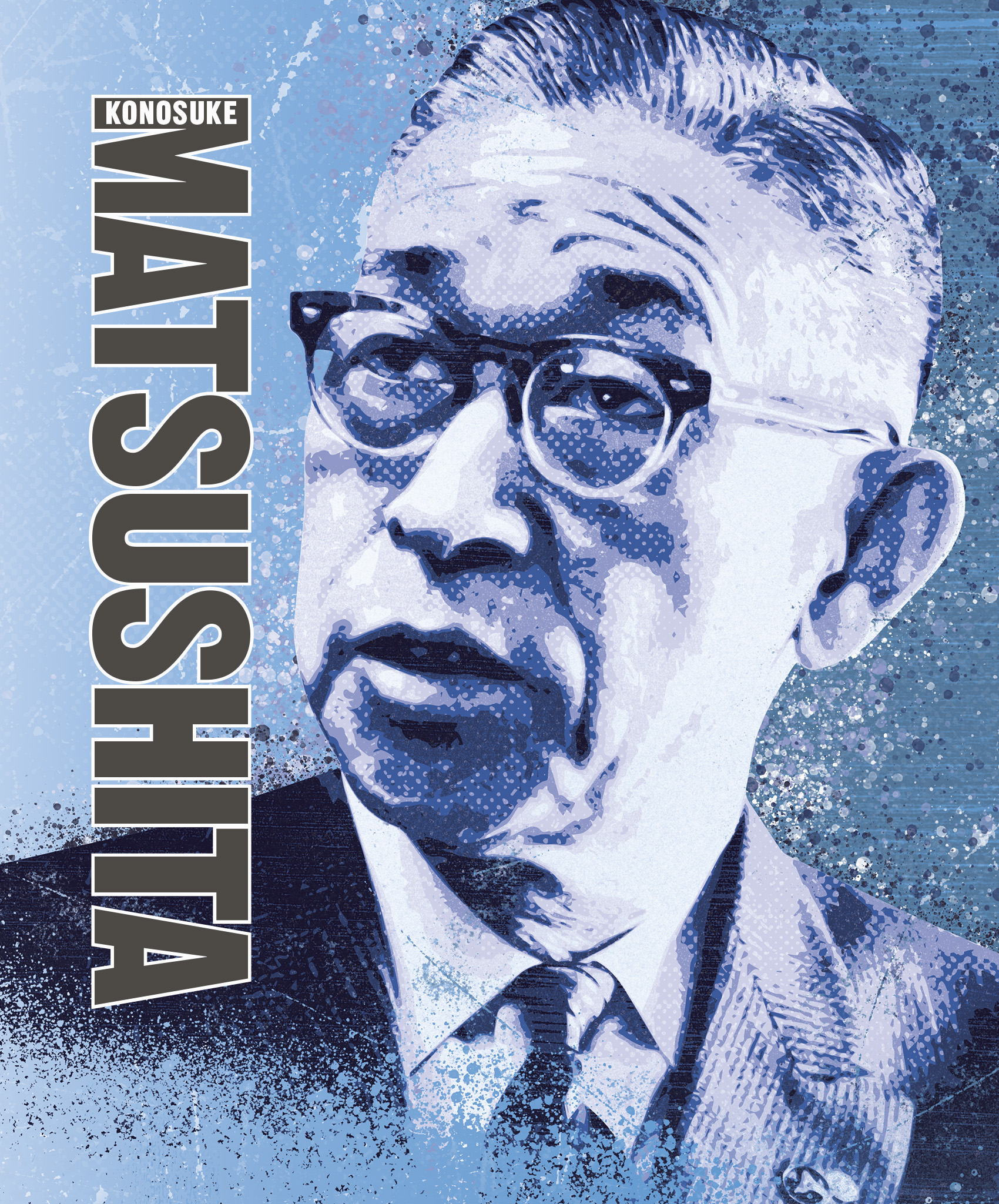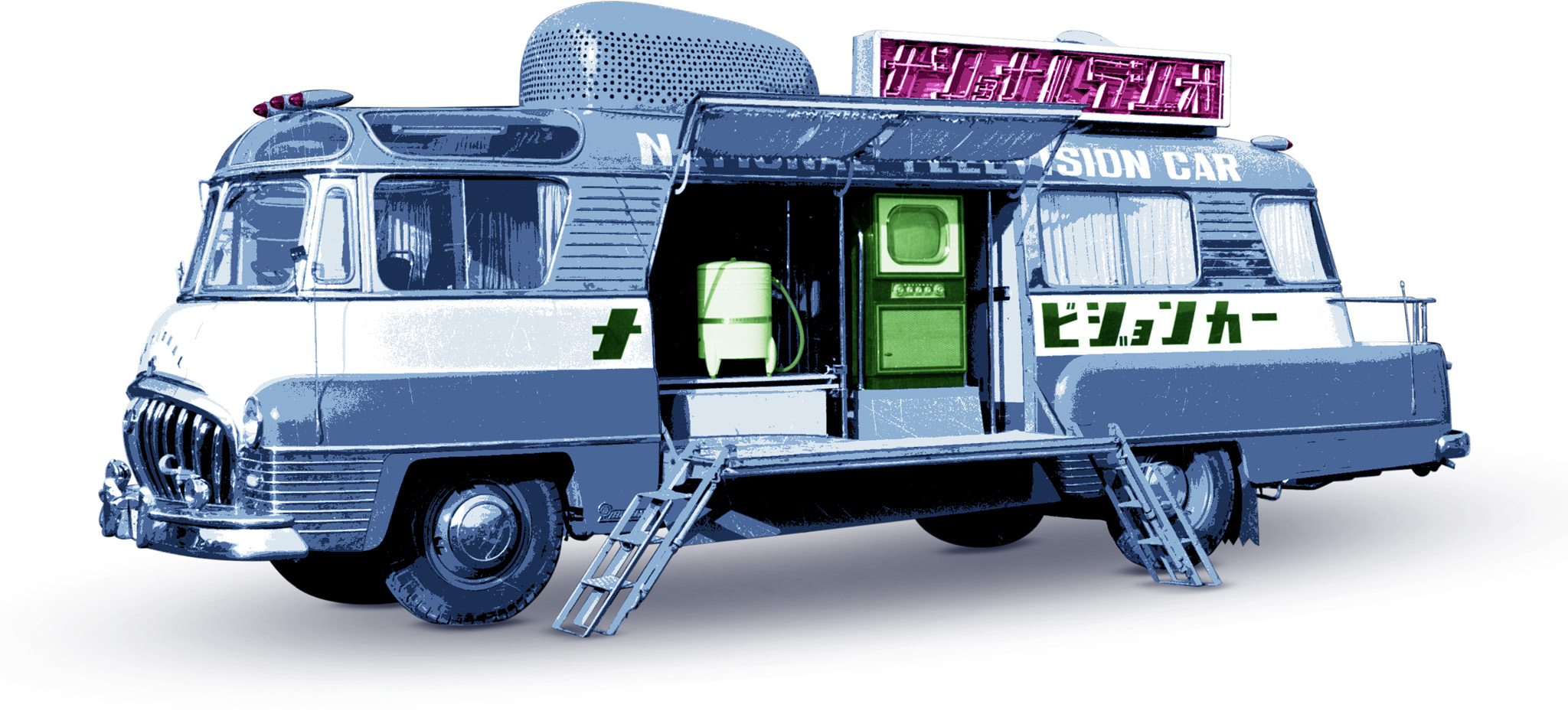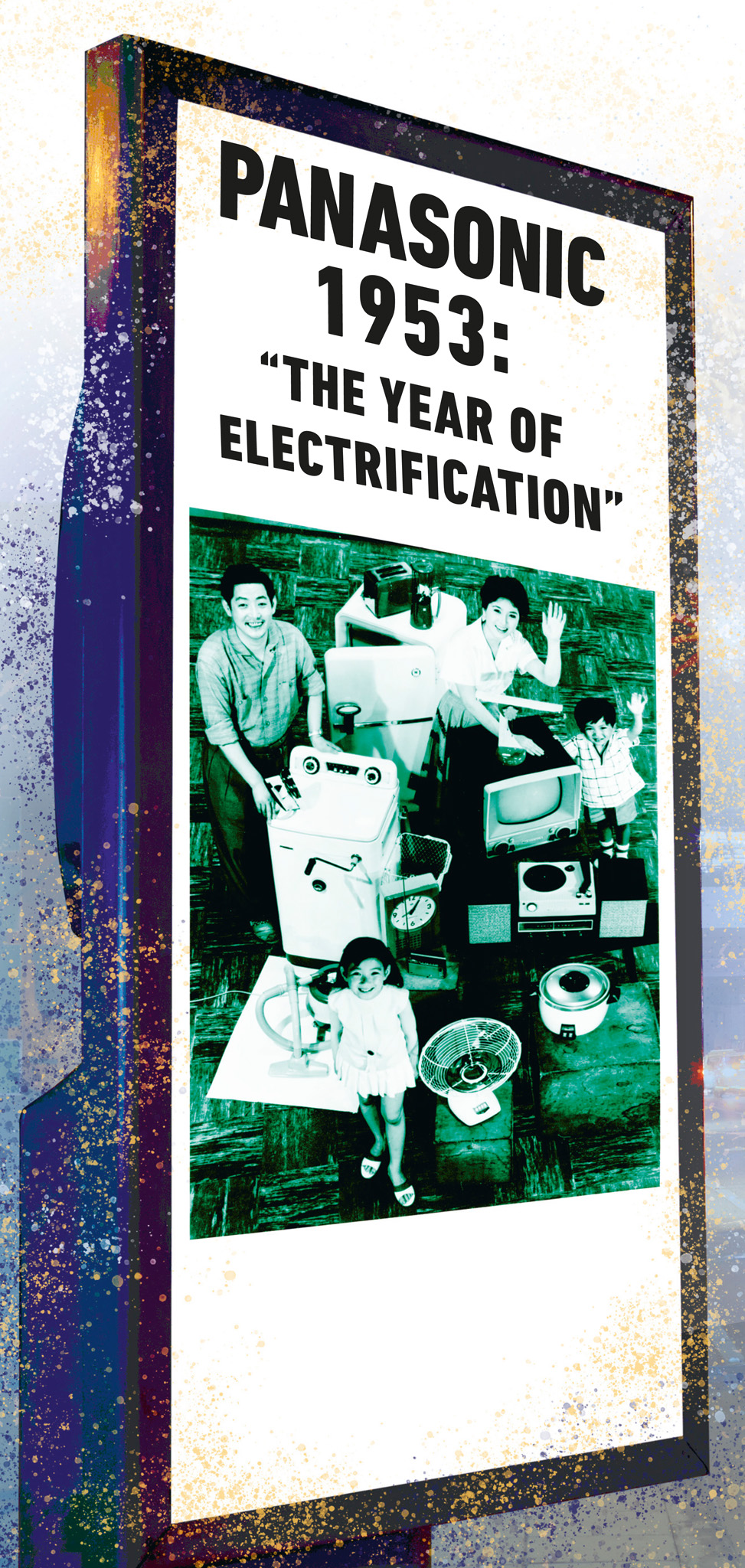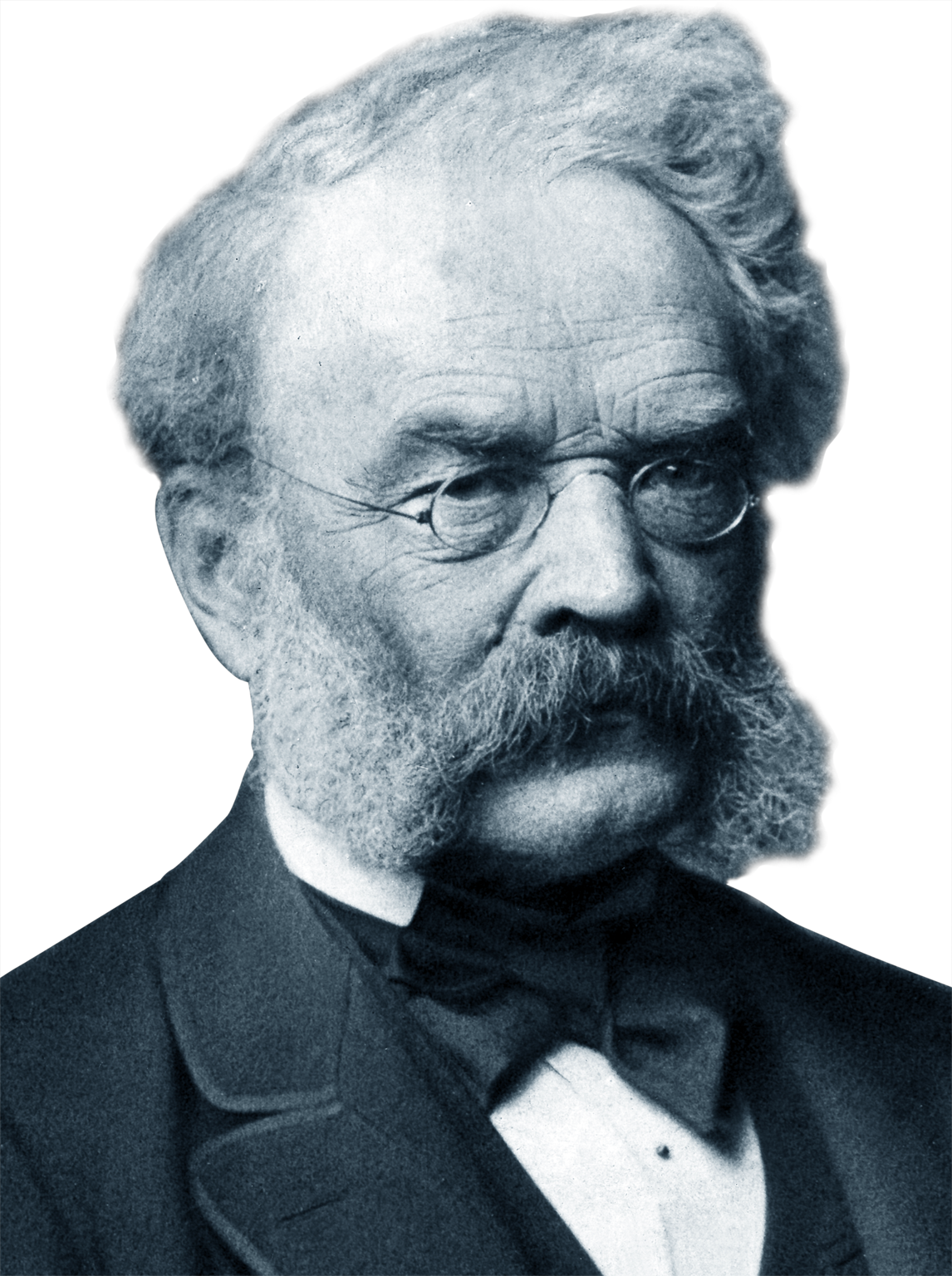
KONOSUKE MATSUSHITA
1894–1989
Konosuke Matsushita was the founder of Panasonic Corporation, one of the world’s major consumer electronics manufacturers. His impoverished childhood and lack of education informed many of his business strategies; Matsushita believed that companies should help society to end poverty and improve people’s lives.
The youngest of eight children, Konosuke Matsushita was born in Wakayama, southern Japan, in 1894. Matsushita’s family had been well off, but when he was four years old, his father made poor business decisions that led to the loss of their land and farm, and they were forced to move to the city. Aged nine, he was sent to Osaka to become an apprentice at a store selling hibachi (portable braziers for cooking and heating). He then took up another apprenticeship at a bicycle shop, where he learned to be a salesman.
Bright idea
At the age of 15, Matsushita took a job at the Osaka Electric Light Company and quickly became a skilled technician. While he was there, he worked on a design to improve an electrical socket and showed it to his manager, who rejected the idea. Matsushita was convinced that the product would be successful, and so in 1917, he left the company to start a new business. His wife, Mumeno, whom he had married in 1914, her brother, Toshio, and two former colleagues joined him.
The group had very little money, so all they could afford to get started were some manual tools and basic supplies. After weeks of research and analysis, Matsushita’s socket was ready. Sales were poor, however, and before the end of the year, his two former coworkers had left the business. Matsushita’s luck then turned when one company suddenly placed a large order. The surprise sale gave Matsushita enough money to officially establish his new company in 1918 as Matsushita Electric Housewares Manufacturing Works—known today as Panasonic. He built a factory and within four years had 50 people working there.

A National Television Car toured Japan in 1953, exhibiting Matsushita’s company’s new household appliances.
Affordable luxuries
At a time when electrical appliances were considered luxury items, Matsushita wanted to make them affordable for everyone. In 1927, he launched the “Super Iron,” having set up a new division within his company to mass-produce it, thereby lowering production costs. This allowed him to sell it for just 3.2 yen, well below the 5 yen price tag of other irons on the market. The Super Iron was a hit, and by 1928, Matsushita had increased his number of employees to 300.
However, following the Wall Street Crash of 1929, the company suffered a rapid drop in sales and, as a result, had a lot of unsold stock. Matsushita’s staff feared their jobs would be cut, but he reassured them otherwise. Instead, he halved the factory’s production by having his employees work half days and encouraged them to sell any remaining stock. Within months, his employees had sold off all overstock, the economy had started to recover, and Matsushita’s factory resumed full-scale production.

Known as the “Year of Electrification,” 1953 heralded an age when demand for electrical products grew globally. Domestic appliances such as fans, televisions, and washing machines were mass-produced by Matsushita’s company.
“After all, business is ultimately for the betterment of our society.”
Konosuke Matsushita
Company mission
One of Matsushita’s business strategies had been inspired by a religious gathering that he attended in 1932. He realized that while religion could guide people toward happiness and peace of mind, so too could business, by providing the “physical necessities required” for human contentment. As he later explained to his employees, he felt it was up to the company to try to help make the world a better place and overcome poverty by supplying goods “as plentiful and inexpensive as tap water.”
By 1933, Matsushita’s company was manufacturing more than 200 products. It moved to a new head office and factory in Kadoma, northeast Osaka, where Panasonic is still based today. In 1935, as international exports of his products grew, Matsushita set up a trading department called Matsushita Electric Trading Company. This was a forward- thinking decision at the time, as other manufacturers paid little attention to their sales overseas, and the company’s exports increased further.


Matsushita created an innovative bicycle lamp in 1923. His existing lamp often went out when he cycled at night, but his improved battery-powered bullet-shaped lamp stayed bright for much longer than other lamps.
“Your business is not a means of maintaining your livelihood or an obligation, but something you want to strive for.”
Konosuke Matsushita
Postwar struggles
By 1945, Matsushita had lost 32 factories and offices as a result of World War II. When the Allied forces occupied Japan after the war, they issued new laws—directives that aimed to break up family-led conglomerates—that threatened to shut down his company. In addition, because Matsushita’s company had produced military equipment during the war, the Allied forces ordered him to step down as its president. Matsushita contested his situation more than 50 times. Finally, in 1947, with the support of a petition by the newly formed labor union, as well as retailers and affiliates, Matsushita was permitted to remain and his firm allowed to operate as before.
Western expansion
In 1951, Matsushita went to the US and saw that his company needed to keep up with Western technologies. To do this, he formed a partnership with the Dutch electronics company Philips. In 1959, he expanded his export business by forming Matsushita Electric Corporation of America. Despite stepping down as president in the early 1960s, Matsushita retained an active role in his company’s operations until 1973. He spent much of his retirement writing about his business and social philosophies, sharing his beliefs that it was possible to develop “a road to peace and happiness through prosperity.” He died aged 94.

▲ In a photograph from 1964, Matsushita is surrounded by Panasonic electrical products.
WERNER VON SIEMENS

Born in Hanover, Germany, Werner von Siemens studied science and technology at the Prussian Military Academy’s School of Artillery and Engineering. His invention of the improved pointer telegraph led him to set up the company now known as Siemens AG.
After building an improved pointer telegraph in 1847 (which used a needle to point to letters rather than Morse code), Siemens (1816–1892) established his company with fellow engineer Johann Georg Halske. The technology used in the telegraph laid the foundations for an enhanced generator that achieved high rotational speeds, a huge advancement in electrical engineering that eventually led the company to construct the world’s first electric locomotive in 1879. Siemens was committed to retaining qualified employees and set up various social policies, including a pension program.
MILESTONES
BEGINS BUSINESS
Founds Matsushita Electric Housewares Manufacturing Works in 1918. Sells plugs and double sockets.
INVENTS TOP SELLER
Designs a bicycle lamp in 1923 that could operate for up to 40 hours without a battery charge.
ESTABLISHES INSTITUTE
Sets up an Employee Training Institute in 1934 to train young people in engineering and business.
RECEIVES HONOR
Made a Decorated Commander in the Order of Orange-Nassau in the Netherlands in 1958.
WRITES BESTSELLER
Publishes Japan at the Brink, a book on education and economic policies, in 1974; it sells 600,000 copies.
